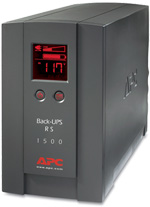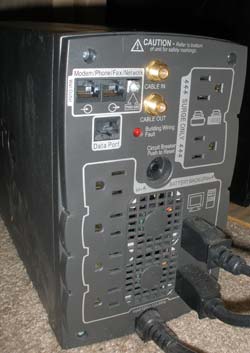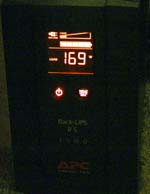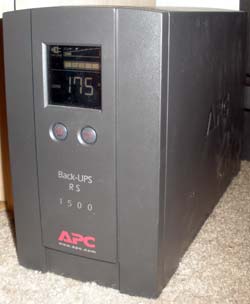
The APC BACK-UPS RS 1500 LCD is indeed great protection. This is a very nice looking unit with a large and bright LCD screen. Both buttons on the front light up as well. It can handle heavy loads up to 865 watts (1500 VA) and it has Automatic Voltage Regulation. These features make it great for applications where battery backup and surge protection are critical to maintaining stability and up-times.
This unit is quite large and heavy and it is from one of the most trusted, if not, the most trusted, name in the UPS (Uninterruptible Power Source) industry.
A great example of why people trust APC is the customer service they provide. Several years ago we ordered a battery backup from APC and received a defective unit, APC sent a new UPS to us before we had even returned the defective one. We were very impressed and we recommend paying the higher prices for APC products due to the high quality of the products and customer support.
It seems to us that a certain percentage of all electronics will end up being defective from any company, so if you do run into a problem you can get the support you need from APC.

One thing that must be noted is that this UPS produces a Stepped approximation to a sinewave when on battery backup. The stepped sine wave cannot be used reliably with many modern power supplies due to the Active PFC (Power Factor Correction) circuitry in these power supplies. We do know of some very good modern power supplies that do not use any kind of PFC at all. The particular supply we tested with this UPS is the Mushkin HP-550 550 Watt. If you need more power than that you can get the Mushkin XP-650 650 Watt which should work just as well with this UPS, since the specs report it also doesn’t use PFC. Both of these power supplies should run perfectly on the stepped wave that the RS 1500 LCD produces. The only drawback to using non-PFC power supplies in your computer is that the system will use more wattage, since the PFC increases the efficiency of the power supply. In our case the wattage usage meter in our APC BACK-UPS RS 1500 LCD reports that we use about 30 more watts on average with the non-PFC power supply than with a PFC enabled power supply.

We are less concerned about the slight power increase than with running a stable system. With the non-PFC power supplies installed in our systems we have enjoyed 100% up-times since we got everything working together. The power has gone out several times and there are usually one or two brownouts in our area per day. All that had no effect on our network or workstations due to the RS 1500 LCD UPS. The on battery time is >20 minutes for our load of about 200 Watts max. The load meter shows that to be about 25% of full-load.
We notice the AVR protection when we turn our vacuum cleaner on, it dims the lights but doesn’t bother anything that’s on the UPS. Also the load meter and wattage usage readouts are great for determining how much equipment is too much for this UPS.

Overall we highly recommend this UPS unit from APC, with the one caveat about the incompatibly with Active PFC (Power Factor Correction) power supplies. If you want to buy the top of the line power supply for your new computer system we think you’ll need a pure-sine wave UPS, since you probably won’t find really high powered PSUs (Power Supply Units) without the PFC circuitry. We feel for even the most powerful modern systems today the Mushkin XP-650 650 Watt without PFC should be enough or maybe go with a case that can handle dual power supplies.
Only time can tell if the stepped-sine wave UPS will become obsolete, but things seem headed that direction. On the other hand there will most likely be non-PFC power supplies in many electronics for years to come.
